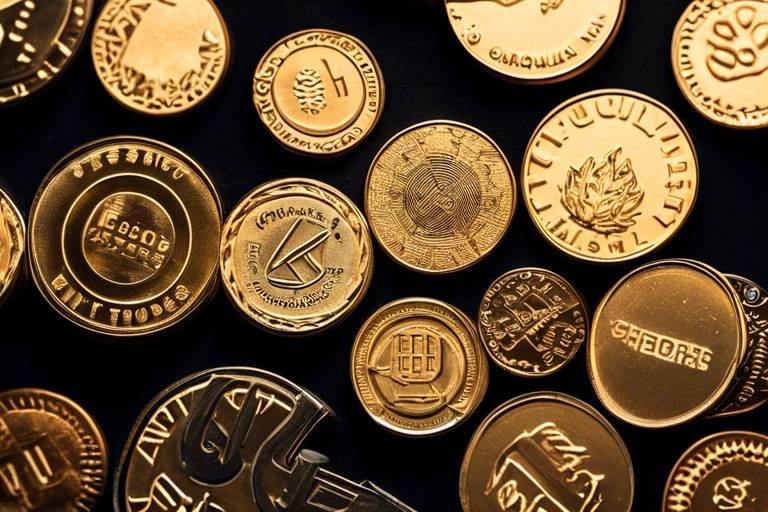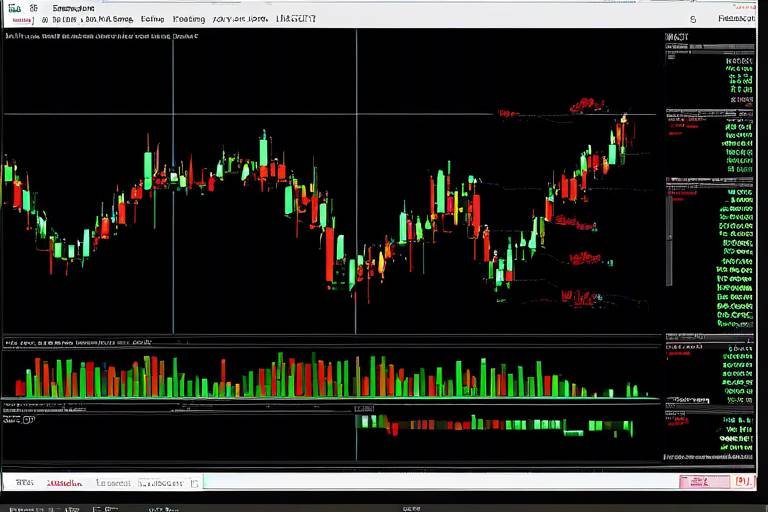Market Analysis - The Future of Crypto Derivatives Trading
As we navigate through the digital age, the world of finance is undergoing a seismic shift. One of the most intriguing developments in this landscape is the rise of crypto derivatives trading. This innovative financial instrument allows traders to speculate on the price movements of cryptocurrencies without actually owning the underlying assets. Imagine being able to ride the waves of Bitcoin's price fluctuations without having to hold it in your wallet! In this article, we will explore the evolving landscape of crypto derivatives trading, diving into market trends, regulatory challenges, and potential future developments that could shape this industry.
To grasp the significance of crypto derivatives, we first need to understand what they are. Crypto derivatives are financial contracts whose value is derived from the price of an underlying cryptocurrency. This means that, instead of buying Bitcoin directly, you can enter into a contract that reflects its value. There are several types of derivatives, including futures, options, and swaps. Each has its own unique features and uses:
- Futures: Contracts that obligate the buyer to purchase, and the seller to sell, an asset at a predetermined price at a specified time in the future.
- Options: Contracts that give the buyer the right, but not the obligation, to buy or sell an asset at a specified price within a certain timeframe.
- Swaps: Contracts in which two parties exchange cash flows or other financial instruments, often used to hedge against risks.
These derivatives play a crucial role in the crypto market by providing traders with tools to hedge against price volatility, speculate on price movements, and enhance liquidity. In essence, they offer a way to manage risk and capitalize on market opportunities, making them a vital component of the modern trading ecosystem.
The crypto derivatives market has been experiencing significant growth, driven by various factors. One notable trend is the increased participation of institutional investors. These large players are beginning to see the potential of crypto derivatives as a way to diversify their portfolios and gain exposure to the burgeoning crypto market. This shift is not just a passing fad; it represents a fundamental change in how traditional finance views digital assets.
So, what’s fueling this institutional adoption? Several factors are at play:
- Increased Legitimacy: As regulatory frameworks evolve, institutions are feeling more secure about entering the crypto space.
- Hedge Against Inflation: With concerns about inflation rising, many institutions are turning to cryptocurrencies as a hedge.
- Advanced Trading Infrastructure: The development of sophisticated trading platforms has made it easier for institutions to engage in crypto derivatives trading.
This influx of institutional capital is not just a boon for the market; it also brings a level of stability that has been lacking in the past. With more players in the game, the market is expected to mature, leading to less volatility and more robust trading practices.
One of the most significant benefits of institutional involvement is the enhancement of market liquidity. More liquidity means that traders can enter and exit positions with greater ease, which is crucial in a market known for its rapid price swings. Increased liquidity can lead to tighter spreads, allowing traders to maximize their profits. Imagine trying to sell a rare collectible; the more buyers there are, the easier it is to sell at a favorable price. The same principle applies to crypto derivatives trading.
However, with the rise of crypto derivatives, effective risk management strategies become essential. The volatility of cryptocurrencies can be daunting, but traders can employ various approaches to mitigate risks:
- Diversification: Spreading investments across different assets to reduce exposure to any single asset's volatility.
- Stop-Loss Orders: Setting predetermined exit points to limit potential losses.
- Hedging: Using derivatives to offset potential losses in other investments.
By implementing these strategies, traders can better navigate the choppy waters of the crypto market, making informed decisions that align with their risk tolerance.
The regulatory environment surrounding crypto derivatives is complex and constantly evolving. Recent developments have seen governments around the world take a closer look at how these instruments are traded. As regulations tighten, market participants must stay informed to ensure compliance and avoid potential pitfalls. The challenge lies in balancing innovation with regulation, ensuring that the market remains accessible while protecting investors.
Looking ahead, the future of crypto derivatives trading is filled with promise but also challenges. Experts predict that technological advancements will play a pivotal role in shaping the market. For instance, the integration of blockchain technology and artificial intelligence could revolutionize trading practices, making them more efficient and secure.
Emerging technologies are set to streamline the trading process, enhance security, and improve transparency. Blockchain can provide a decentralized and immutable ledger, while AI can analyze vast amounts of data to predict market trends. Together, these technologies could create a more robust trading environment, attracting even more participants to the market.
Despite the growth potential, several challenges lie ahead for crypto derivatives trading. Regulatory hurdles remain a significant obstacle, as governments continue to grapple with how to effectively regulate this rapidly evolving market. Additionally, market volatility could pose risks that deter new traders from entering the space. It’s essential for both new and seasoned traders to stay informed and adapt to these changes.
1. What are crypto derivatives?
Crypto derivatives are financial contracts whose value is derived from the price of an underlying cryptocurrency, allowing traders to speculate on price movements without owning the asset.
2. How do I trade crypto derivatives?
To trade crypto derivatives, you need to sign up with a trading platform that offers these instruments, deposit funds, and then you can start trading futures, options, or swaps based on your strategy.
3. What are the risks associated with crypto derivatives?
The main risks include market volatility, leverage risks, and regulatory uncertainties. Implementing risk management strategies can help mitigate these risks.
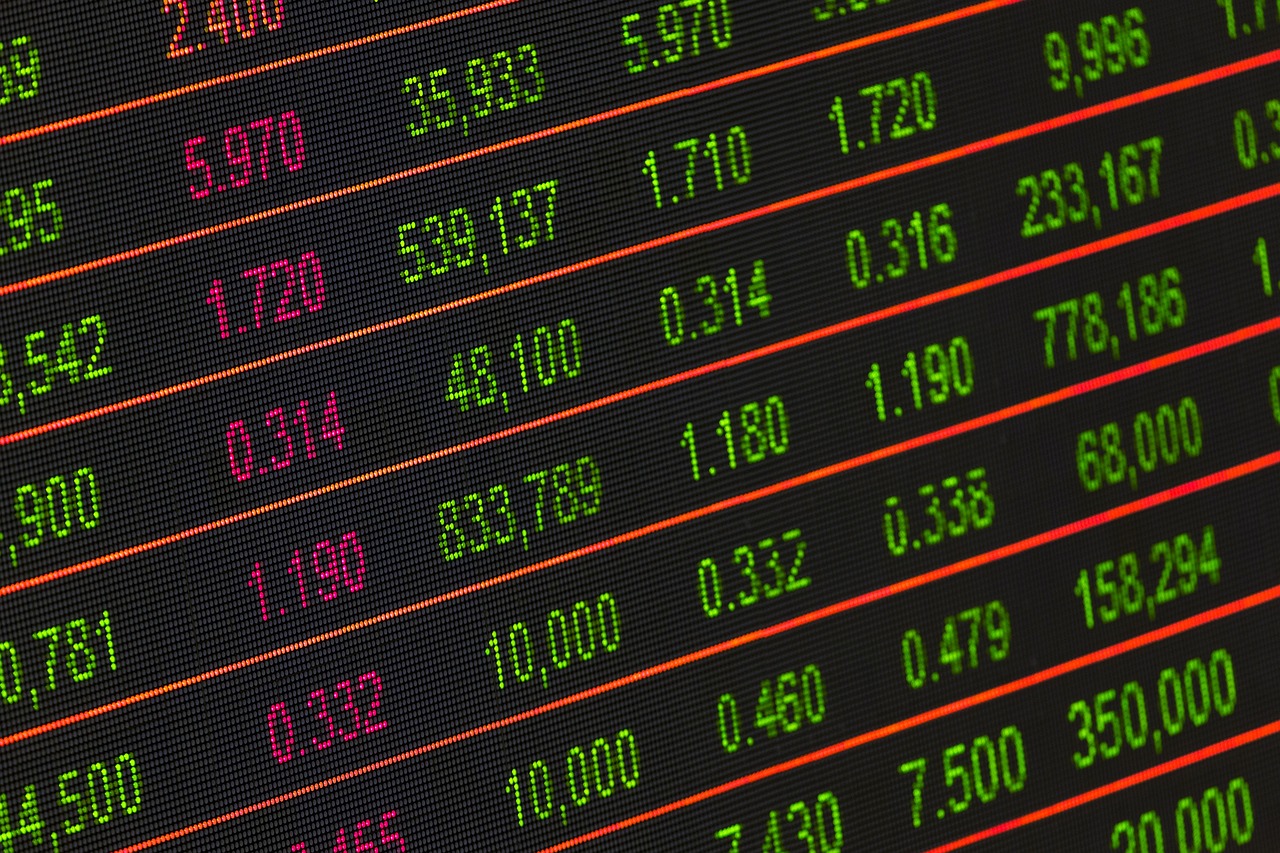
Understanding Crypto Derivatives
Crypto derivatives are a fascinating and complex aspect of the financial world, specifically tailored to the unique characteristics of cryptocurrencies. At their core, these are financial contracts whose value is derived from the price movements of underlying cryptocurrencies such as Bitcoin, Ethereum, and others. This means that instead of owning the actual cryptocurrency, traders can speculate on its price through various derivative instruments. Think of it like betting on a horse race; you’re not buying the horse, but you’re wagering on its performance based on various factors.
There are several types of crypto derivatives that traders can utilize, each serving different purposes and catering to various trading strategies. The most common types include:
- Futures Contracts: These are agreements to buy or sell a specific amount of cryptocurrency at a predetermined price on a future date. They allow traders to hedge against price fluctuations or speculate on future price movements.
- Options Contracts: Options give traders the right, but not the obligation, to buy or sell a cryptocurrency at a specific price before a certain date. This flexibility can be a powerful tool for managing risk.
- Swaps: These are contracts where two parties exchange cash flows or returns based on the price of the underlying cryptocurrency. They can be used to manage exposure to price changes.
The significance of crypto derivatives in the market cannot be overstated. They provide a way for investors to hedge their positions, manage risk, and enhance liquidity in the market. By allowing traders to take positions without owning the underlying asset, derivatives can amplify trading volume and attract more participants, including institutional investors who are increasingly looking to enter the crypto space.
Additionally, crypto derivatives can serve as a barometer for market sentiment. For instance, if a large number of traders are buying futures contracts expecting prices to rise, it may indicate bullish sentiment in the market. Conversely, a surge in options contracts that bet on price declines could signal bearish expectations. This dynamic creates a rich tapestry of information that savvy traders can analyze to make informed decisions.
However, it’s crucial to note that trading crypto derivatives comes with its own set of risks. The volatility of cryptocurrencies can lead to rapid price swings, which may result in significant gains or losses. Therefore, understanding the mechanics of these financial instruments and employing effective risk management strategies is essential for anyone looking to navigate the world of crypto derivatives successfully.
In summary, crypto derivatives are reshaping the landscape of cryptocurrency trading by providing innovative ways to speculate on price movements, hedge against risks, and enhance market liquidity. As the market continues to evolve, staying informed about these instruments will be vital for traders and investors alike.
- What are crypto derivatives? Crypto derivatives are financial contracts that derive their value from the price movements of underlying cryptocurrencies.
- What types of crypto derivatives are there? The main types include futures contracts, options contracts, and swaps.
- Why are crypto derivatives important? They help investors hedge risks, manage exposure, and enhance liquidity in the market.
- What are the risks associated with trading crypto derivatives? The primary risks include market volatility, which can lead to significant gains or losses.

Current Market Trends
The world of crypto derivatives trading is not just evolving; it's transforming at a breakneck pace. As we dive into the current market trends, it's essential to recognize the seismic shifts occurring within this financial space. One of the most significant trends is the increased institutional participation. Major financial institutions are no longer sitting on the sidelines; they are jumping into the crypto derivatives pool, and this is reshaping the landscape. Why are they doing this? The answer lies in the potential for high returns, coupled with the growing acceptance of cryptocurrencies in mainstream finance.
Moreover, the rise of decentralized finance (DeFi) platforms is another key trend. DeFi is revolutionizing how we think about trading and investing in cryptocurrencies. These platforms offer users the ability to trade derivatives without the need for intermediaries, which can lead to lower fees and greater transparency. Imagine being able to trade derivatives directly from your wallet! This shift not only democratizes access to trading but also encourages a more diverse range of participants, from retail investors to sophisticated traders.
To illustrate these trends, let’s take a look at a recent report that highlights the growth of institutional investment in crypto derivatives:
| Year | Institutional Investment in Crypto Derivatives (in Billion USD) | Growth Rate (%) |
|---|---|---|
| 2020 | 2.5 | 150 |
| 2021 | 6.5 | 160 |
| 2022 | 15.0 | 130 |
| 2023 | 25.0 | 66.67 |
This table showcases the explosive growth in institutional investment in crypto derivatives over the past few years. The trend is clear: as more institutions enter the market, the overall legitimacy and stability of crypto derivatives trading increase. But what does this mean for the average trader? Well, with more capital flowing into the market, we can expect enhanced liquidity. This liquidity is crucial because it allows for smoother transactions and less slippage, ultimately benefiting all traders.
In addition to institutional participation and DeFi growth, we cannot overlook the impact of technological advancements. The integration of sophisticated trading algorithms and artificial intelligence is enabling traders to make more informed decisions. These technologies analyze vast amounts of data in real-time, providing insights that were previously unattainable. Imagine having a personal trading assistant that never sleeps, constantly analyzing market trends and alerting you to potential opportunities!
However, with all these exciting developments, there are still challenges ahead. The market remains volatile, and while liquidity is improving, it can also lead to rapid price swings that can catch traders off guard. Therefore, understanding these trends and adapting to them is vital for anyone looking to succeed in the crypto derivatives space.
- What are crypto derivatives? Crypto derivatives are financial contracts whose value is based on underlying cryptocurrencies, allowing traders to speculate on price movements without owning the actual assets.
- Why is institutional participation important? Institutional participation brings significant capital into the market, enhancing liquidity and stability, which benefits all traders.
- What role does DeFi play in crypto derivatives? DeFi platforms allow users to trade derivatives without intermediaries, which can lower costs and increase access for a broader range of participants.
- How can technology improve trading strategies? Advanced algorithms and AI can analyze market data in real-time, providing traders with actionable insights and improving decision-making.

Institutional Adoption
The world of crypto derivatives is rapidly transforming, and one of the most significant driving forces behind this shift is the increased involvement of institutional investors. Traditionally, cryptocurrencies were viewed as speculative assets, primarily attracting retail traders. However, the landscape is changing, with large financial institutions now recognizing the potential of crypto derivatives as a viable investment strategy. This growing interest is not just a passing trend; it's a fundamental shift that could redefine the entire market.
What’s fueling this institutional adoption? Several factors are at play. First and foremost, the search for diversification in investment portfolios has led institutions to explore alternative assets, including cryptocurrencies. With the traditional markets facing volatility and uncertainty, crypto derivatives offer a new avenue for hedging risks and enhancing returns. Furthermore, the development of more sophisticated trading platforms and financial products has made it easier for institutional players to enter the market.
Another critical aspect is the maturation of the regulatory environment. As governments and regulatory bodies begin to establish clearer guidelines for crypto trading, institutions are feeling more secure in their investments. This regulatory clarity is essential for institutions that require compliance and risk management frameworks before committing capital to new asset classes. In fact, many institutions now view regulatory developments as a sign that the crypto market is becoming more legitimate, which in turn boosts their confidence in participating.
Moreover, the involvement of established financial entities in the crypto space has created a domino effect. When major players like Goldman Sachs or Fidelity announce their entry into crypto derivatives, it not only legitimizes the market but also encourages other institutions to follow suit. This institutional validation is crucial in attracting further investment and building credibility in the eyes of the public and potential investors.
As institutional adoption continues to rise, we can expect several implications for market stability and growth. Increased liquidity is one of the most immediate benefits. When institutional capital flows into the market, it enhances trading volumes and narrows bid-ask spreads, making it easier for all traders to execute their strategies efficiently. Additionally, with more sophisticated players in the market, we can anticipate a greater emphasis on risk management practices and transparency, ultimately leading to a more mature trading environment.
However, it’s essential to recognize that institutional adoption also brings its own set of challenges. The entry of large players can introduce new forms of volatility and market manipulation, which could undermine the stability that institutions aim to achieve. Therefore, while the influx of institutional capital is generally seen as a positive development, it is crucial for all market participants to remain vigilant and adapt to the evolving landscape.
In conclusion, institutional adoption of crypto derivatives marks a pivotal moment in the evolution of the cryptocurrency market. As more institutions recognize the potential of these financial instruments, the market is poised for significant growth and maturation. The challenge lies in ensuring that this growth is sustainable and beneficial for all participants in the ecosystem.
- What are crypto derivatives?
Crypto derivatives are financial contracts whose value is derived from underlying cryptocurrencies, allowing traders to speculate on price movements without owning the actual assets.
- Why are institutions interested in crypto derivatives?
Institutions seek diversification, regulatory clarity, and enhanced returns, making crypto derivatives an attractive option for risk management and investment strategies.
- How does institutional adoption impact the crypto market?
Increased institutional participation can lead to enhanced liquidity, improved market stability, and greater credibility for the crypto ecosystem.
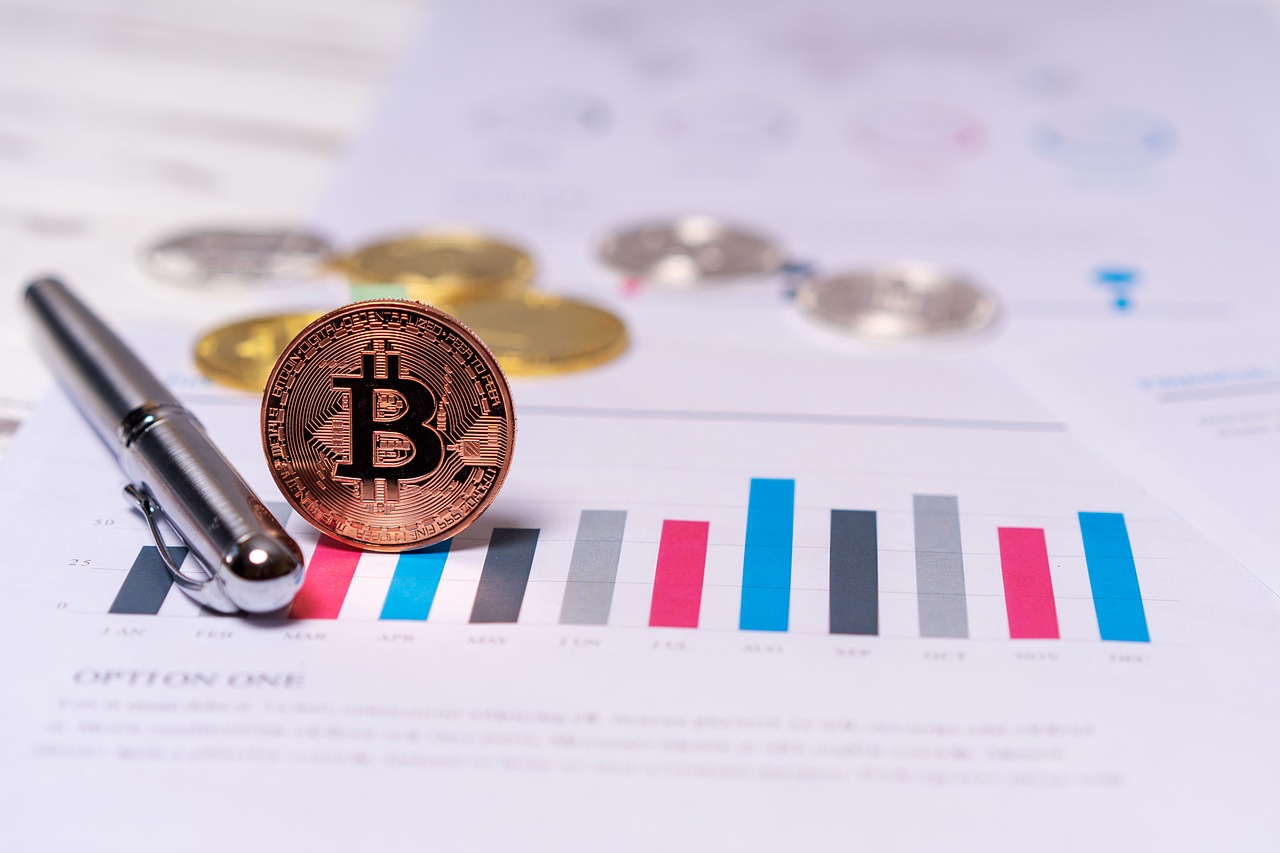
Impact on Liquidity
The influx of institutional capital into the crypto derivatives market has created a seismic shift in liquidity dynamics. Liquidity refers to how easily an asset can be bought or sold in the market without affecting its price. In the context of crypto derivatives, enhanced liquidity is a game-changer for traders and investors alike. It means that when you want to enter or exit a position, you can do so quickly and at a price that reflects the market's true value, rather than being forced to accept a less favorable rate due to a lack of buyers or sellers.
Imagine trying to sell a rare collectible in a small town. If there are only a few interested buyers, you might have to settle for a lower price. Now, picture being in a bustling city where hundreds are vying for that same collectible. The competition drives the price up, allowing you to sell at a premium. This analogy holds true for the crypto derivatives market. With more institutional players entering the fray, the market becomes more vibrant and competitive, leading to better pricing for all participants.
Moreover, increased liquidity can lead to tighter spreads, which is the difference between the buying and selling price of a derivative. Tighter spreads are beneficial for traders as they reduce transaction costs, making it cheaper to trade. For example, if the spread on a Bitcoin futures contract narrows from $100 to $50 due to higher liquidity, traders can save significantly on each transaction. This cost efficiency can attract even more traders, creating a virtuous cycle of liquidity enhancement.
However, it’s essential to recognize that while increased liquidity can provide numerous benefits, it also comes with its own set of challenges. For instance, a surge in liquidity can sometimes lead to increased volatility, particularly in a market as dynamic as crypto. When large institutional trades are executed, they can cause sudden price swings that may catch retail traders off guard. Therefore, while liquidity is a boon, it is crucial for all market participants to remain vigilant and employ effective risk management strategies.
In summary, the impact of institutional capital on liquidity in the crypto derivatives market is profound. It enhances market efficiency, reduces trading costs, and attracts more participants. However, as we embrace these changes, we must also be aware of the potential for increased volatility and the need for strategic trading approaches. As the market continues to evolve, understanding these dynamics will be key for anyone looking to navigate the exciting world of crypto derivatives.
- What are crypto derivatives? Crypto derivatives are financial contracts whose value is derived from underlying cryptocurrencies, allowing traders to speculate on price movements without owning the actual assets.
- How does liquidity affect trading? Higher liquidity means that assets can be bought or sold quickly without significant price changes, leading to better trading conditions and lower costs.
- What risks are associated with crypto derivatives? The primary risks include market volatility, potential for large losses, and the complexity of managing derivative positions effectively.
- Why is institutional participation important? Institutional participation brings significant capital to the market, enhancing liquidity, stability, and overall market confidence.

Risk Management Strategies
In the fast-paced world of crypto derivatives trading, where volatility can swing your portfolio from riches to rags in the blink of an eye, effective risk management strategies are not just beneficial—they're essential. Imagine you're on a roller coaster; the thrill is exhilarating, but without the safety harness, the ride can quickly turn dangerous. Similarly, in crypto trading, a robust risk management strategy acts as your safety harness, keeping your investments secure while allowing you to enjoy the ride.
One of the most fundamental approaches to managing risk in crypto derivatives is the use of stop-loss orders. These are pre-set orders that automatically sell your assets when they reach a certain price, thereby limiting potential losses. For instance, if you buy Bitcoin at $50,000 and set a stop-loss at $48,000, your position will automatically sell if Bitcoin's price drops to that level, protecting you from further declines. This simple yet effective tool can be your first line of defense against market downturns.
Another critical strategy is diversification. Just as you wouldn't put all your eggs in one basket, spreading your investments across various cryptocurrencies and derivatives can mitigate risks. By diversifying your portfolio, you ensure that a decline in one asset might be offset by gains in another. For example, if you have positions in Bitcoin, Ethereum, and a few altcoins, a drop in Bitcoin's price could be balanced by a rise in Ethereum or an altcoin, thus stabilizing your overall investment.
Moreover, traders should consider employing position sizing techniques. This involves determining how much of your capital to risk on a single trade. A common rule of thumb is to risk no more than 1-2% of your total trading capital on any given trade. This way, even if a trade goes against you, it won't significantly impact your overall portfolio. Think of it as keeping your financial ship afloat—if one part of the vessel takes on water, the rest remains buoyant.
In addition to these strategies, utilizing hedging techniques can also be beneficial. Hedging involves taking an offsetting position in a related asset to reduce risk exposure. For instance, if you hold a long position in Bitcoin, you might take a short position in a Bitcoin futures contract. This way, if Bitcoin's price drops, the gains from your futures contract can help offset the losses from your long position. It's like having an umbrella ready for when the rain unexpectedly pours during your sunny day.
Lastly, it’s vital to stay informed about market trends and news that could impact your investments. The crypto market is notoriously reactive to news, whether it's regulatory changes, technological advancements, or macroeconomic factors. By keeping your finger on the pulse of the market, you can adjust your strategies as necessary. This proactive approach is akin to being a skilled sailor who reads the wind and adjusts sails accordingly to navigate through turbulent waters.
In summary, implementing a combination of stop-loss orders, diversification, position sizing, hedging, and staying informed can significantly enhance your risk management strategy in crypto derivatives trading. Each of these techniques plays a crucial role in safeguarding your investments and ensuring that you can ride the waves of the crypto market with confidence.
- What is a stop-loss order? A stop-loss order is a pre-set instruction to sell an asset when it reaches a specific price, helping to limit potential losses.
- Why is diversification important? Diversification helps to spread risk across different assets, reducing the impact of a decline in any single investment.
- How much should I risk on a trade? Many traders follow the rule of risking no more than 1-2% of their total trading capital on any single trade.
- What is hedging? Hedging is a risk management strategy that involves taking an offsetting position in a related asset to reduce exposure to potential losses.
- Why is staying informed crucial in crypto trading? The crypto market is highly sensitive to news and trends; being informed allows traders to adapt their strategies quickly.
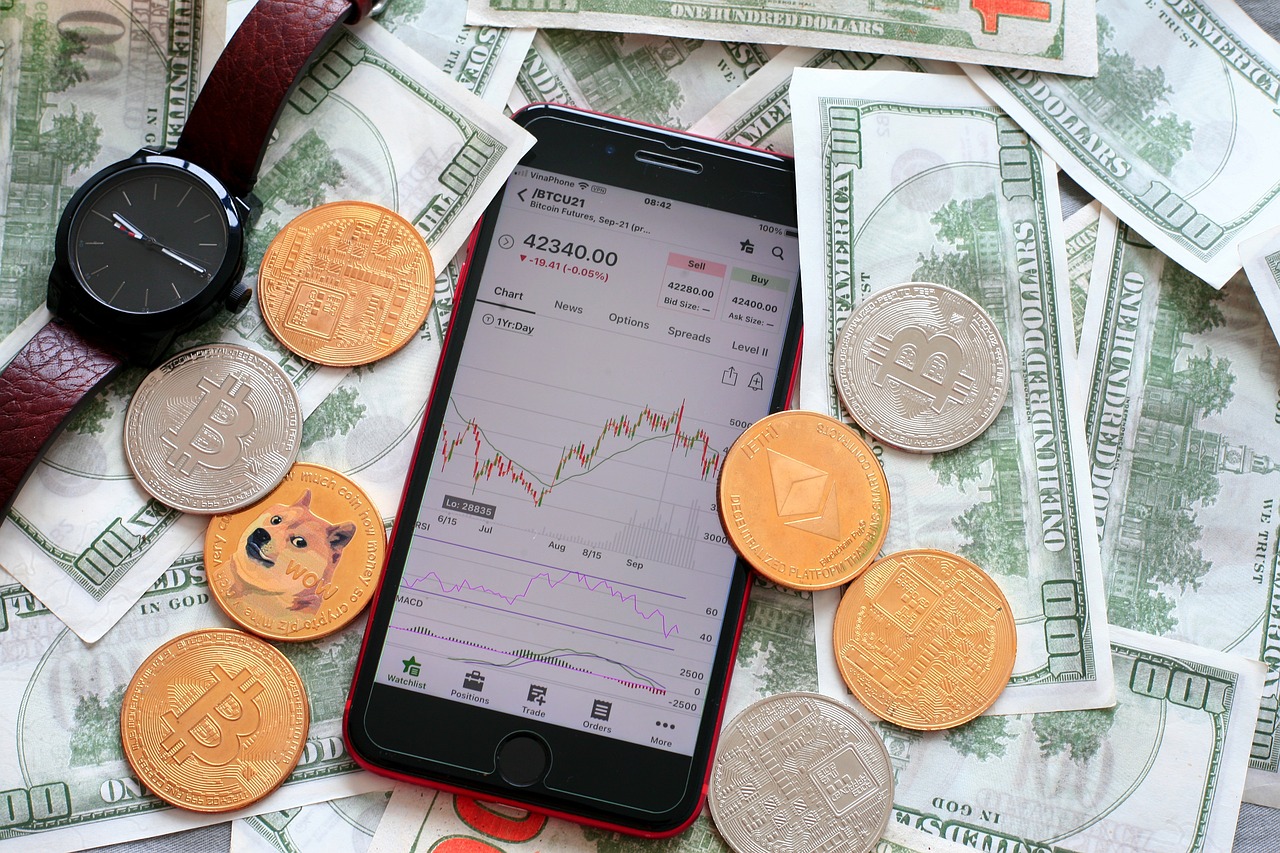
Regulatory Landscape
The regulatory environment surrounding crypto derivatives is as dynamic as the market itself, constantly shifting and evolving to address the unique challenges posed by this innovative financial sector. As governments and regulatory bodies around the world grapple with the implications of cryptocurrencies and their derivatives, the landscape can often feel like a maze. In this section, we'll unravel some of the most significant recent developments and how they may influence market participants.
One of the primary challenges regulators face is the anonymity and decentralization inherent in cryptocurrencies. This creates a dilemma: how do you regulate a market that operates outside traditional financial systems? In response, many jurisdictions have begun to introduce frameworks aimed at providing clarity and stability. For instance, the European Union is working on the Markets in Crypto-Assets Regulation (MiCAR), which aims to create a comprehensive regulatory framework for crypto assets, including derivatives. This regulation could set a precedent for other regions, potentially influencing global standards.
In the United States, the regulatory landscape is fragmented, with various agencies such as the Commodity Futures Trading Commission (CFTC) and the Securities and Exchange Commission (SEC) vying for jurisdiction over crypto derivatives. This lack of a unified approach can create uncertainty for traders and institutions looking to engage in the market. For example, while the CFTC has classified certain crypto derivatives as commodities, the SEC has taken a more cautious stance, focusing on the potential for fraud and investor protection.
Moreover, the rise of decentralized finance (DeFi) platforms adds another layer of complexity to the regulatory landscape. These platforms operate without intermediaries, making it difficult for regulators to enforce compliance. As DeFi continues to gain traction, we can expect regulators to intensify their scrutiny, potentially leading to new regulations that address the unique characteristics of these platforms. This could include requirements for transparency and disclosure, aiming to protect users while fostering innovation.
As we look to the future, it’s essential for market participants to stay informed about regulatory changes. The impact of these regulations can be profound, affecting everything from trading strategies to market liquidity. For example, if a country implements stringent regulations, it could deter institutional investment, leading to decreased liquidity and increased volatility. Conversely, a favorable regulatory environment could encourage growth and attract more participants to the market.
In summary, the regulatory landscape for crypto derivatives is complex and ever-changing. As regulations evolve, market participants must remain agile and informed. The interplay between regulation and market dynamics will undoubtedly shape the future of crypto derivatives trading. Staying ahead of these changes will be crucial for traders and investors looking to navigate this exciting yet challenging market.
- What are crypto derivatives? Crypto derivatives are financial contracts whose value is derived from underlying cryptocurrencies, allowing traders to speculate on price movements without owning the actual assets.
- Why is regulation important for crypto derivatives? Regulation helps ensure market stability, protects investors, and mitigates risks associated with fraud and market manipulation.
- How do regulatory changes impact trading strategies? Changes in regulations can affect market liquidity, accessibility, and the types of trading strategies that are viable, requiring traders to adapt quickly.
- What is the future of crypto derivatives regulation? The future will likely involve more comprehensive frameworks that balance innovation with investor protection, as regulators worldwide seek to create a stable environment for crypto trading.
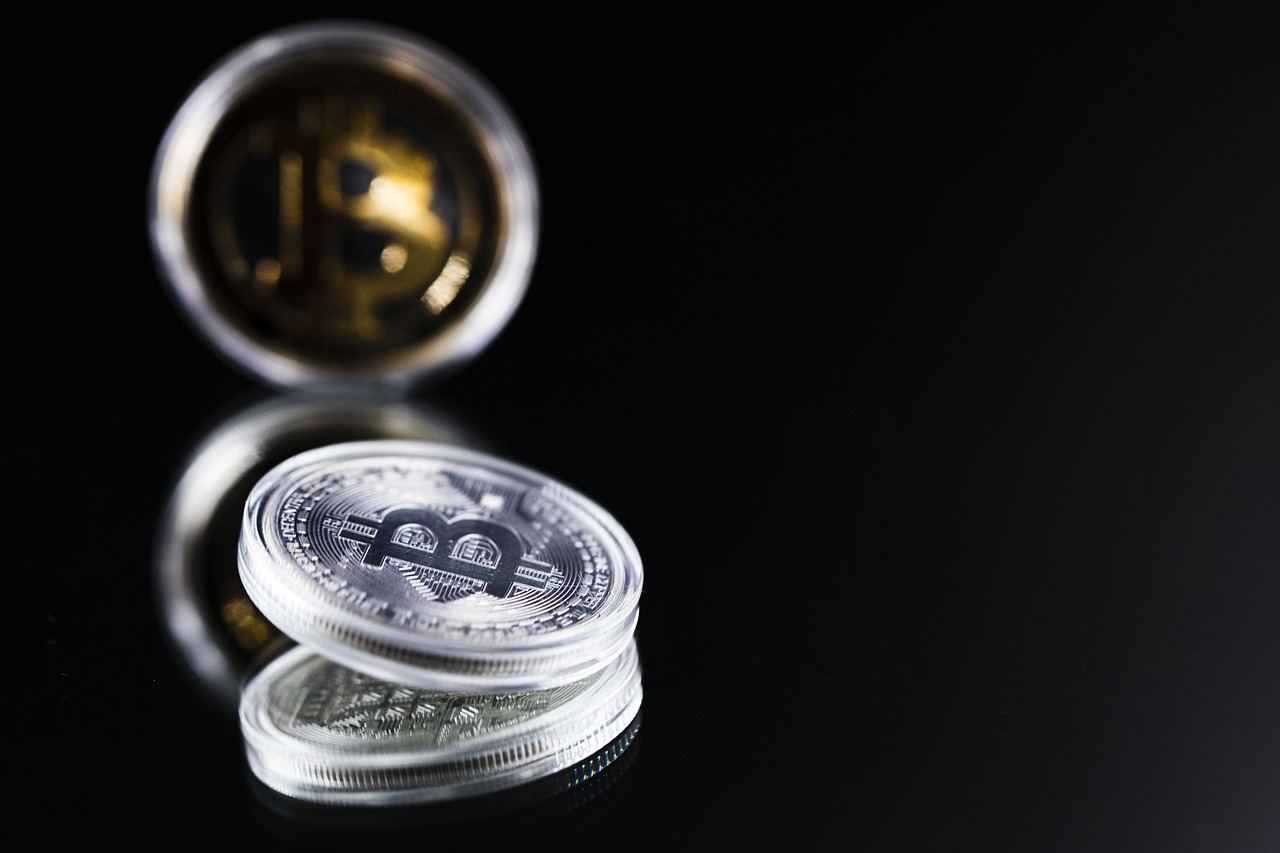
Future Predictions
The world of crypto derivatives trading is at a fascinating crossroads, and predicting its future is akin to trying to forecast the weather in a stormy season. With rapid technological advancements and shifting market dynamics, we are on the brink of a transformation that could redefine how traders engage with cryptocurrencies. Experts are buzzing with insights, and the consensus is that the next few years will be pivotal. But what exactly can we expect? Let's dive into some of the key predictions shaping the landscape.
First off, the integration of blockchain technology is expected to play a significant role in enhancing transparency and security in crypto derivatives trading. Imagine a world where every transaction is recorded on an immutable ledger, making fraud nearly impossible. This level of security will not only boost trader confidence but also attract more institutional players into the market. As blockchain continues to mature, we can anticipate a surge in innovative trading platforms that leverage these advancements, making it easier for traders to access a variety of derivatives.
Moreover, the rise of artificial intelligence (AI) in trading strategies is set to revolutionize the way traders approach the market. AI can analyze vast amounts of data in real-time, providing traders with valuable insights and predictive analytics. Picture having a personal trading assistant that can sift through market trends and historical data to suggest optimal trading strategies. This could lead to more informed decisions, reducing the risks associated with the volatile nature of crypto derivatives.
However, it's not all sunshine and rainbows. The industry is likely to face several challenges that could hinder its growth. One of the most pressing issues is the regulatory landscape. Governments around the world are still grappling with how to regulate crypto derivatives effectively. As regulations tighten, some traders might find themselves navigating a complex web of compliance requirements, potentially stifling innovation. It's crucial for market participants to stay informed and adaptable to these changes.
In addition to regulatory hurdles, market volatility remains a constant concern. While increased liquidity from institutional investments is a positive sign, it doesn't eliminate the potential for sudden price swings. Traders will need to develop robust risk management strategies to safeguard their investments. This might include utilizing advanced hedging techniques or diversifying their portfolios across various derivatives to mitigate risks.
As we look ahead, the future of crypto derivatives trading will be a blend of opportunity and challenge. The key players in this space—traders, institutions, and regulators—will need to collaborate to create a balanced ecosystem that fosters growth while ensuring safety. By embracing technological innovations and being proactive about regulatory changes, the industry can navigate the stormy waters ahead.
- What are crypto derivatives? Crypto derivatives are financial contracts whose value is derived from underlying cryptocurrencies, allowing traders to speculate on price movements without owning the actual assets.
- How can blockchain technology improve crypto derivatives trading? Blockchain enhances transparency and security, making transactions more trustworthy and reducing the risk of fraud.
- What role does AI play in trading strategies? AI analyzes data to provide insights and predictive analytics, helping traders make more informed decisions.
- What challenges does the crypto derivatives market face? Key challenges include regulatory hurdles and market volatility, which require traders to adopt effective risk management strategies.

Technological Innovations
As we dive deeper into the world of crypto derivatives trading, we can't ignore the pivotal role that are playing in reshaping this landscape. Imagine a world where trading is not only faster but also more secure and efficient. This is not just a dream—it's becoming a reality thanks to advancements in blockchain technology and artificial intelligence.
Firstly, blockchain technology stands at the forefront of revolutionizing how crypto derivatives are traded. By providing a decentralized and transparent ledger, blockchain minimizes the risks associated with fraud and manipulation. This technology allows for real-time settlement of trades, which means that transactions can be completed almost instantaneously. Imagine buying a derivative and having it settled in seconds rather than days—this is the kind of speed that blockchain brings to the table.
Moreover, the integration of smart contracts further enhances the trading process. These self-executing contracts with the terms of the agreement directly written into code eliminate the need for intermediaries. This not only reduces costs but also increases trust among parties involved. Think of smart contracts as a digital handshake that automatically enforces the agreement without any human intervention. This innovation is set to streamline operations, making it easier for traders to enter and exit positions.
On the other hand, artificial intelligence (AI) is another game-changer in the realm of crypto derivatives. AI algorithms can analyze vast amounts of data in real time, identifying trends and making predictions that would be impossible for a human trader. This capability allows traders to make more informed decisions, potentially leading to higher profits. For instance, AI can process news articles, social media posts, and market data simultaneously, providing insights that help traders anticipate market movements. Imagine having a personal assistant that never sleeps, constantly analyzing the market for you!
However, with great power comes great responsibility. While these technologies present numerous advantages, they also pose challenges. For example, the reliance on algorithms can lead to unforeseen consequences, especially in a volatile market like crypto. Traders must remain vigilant and understand that while technology can enhance trading strategies, it cannot eliminate risk entirely. Additionally, the rapid pace of technological change necessitates continuous learning and adaptation from market participants.
In summary, the future of crypto derivatives trading is being shaped significantly by technological innovations. Blockchain and AI are not just buzzwords; they are powerful tools that are redefining how trades are executed, settlements are made, and risks are managed. As we move forward, staying abreast of these developments will be crucial for anyone involved in the crypto space. The question remains: are you ready to embrace the technological revolution in trading?
- What are crypto derivatives?
Crypto derivatives are financial contracts that derive their value from underlying cryptocurrencies, allowing traders to speculate on price movements without owning the actual asset.
- How does blockchain technology enhance crypto derivatives trading?
Blockchain technology provides a decentralized and transparent ledger, enabling real-time settlements and minimizing risks associated with fraud and manipulation.
- What role does artificial intelligence play in trading?
AI analyzes vast amounts of data to identify trends and make predictions, helping traders make informed decisions and potentially increasing profitability.
- Are there risks associated with using technology in trading?
Yes, while technology can enhance trading strategies, it cannot eliminate risks entirely. Traders should remain vigilant and continuously adapt to market changes.
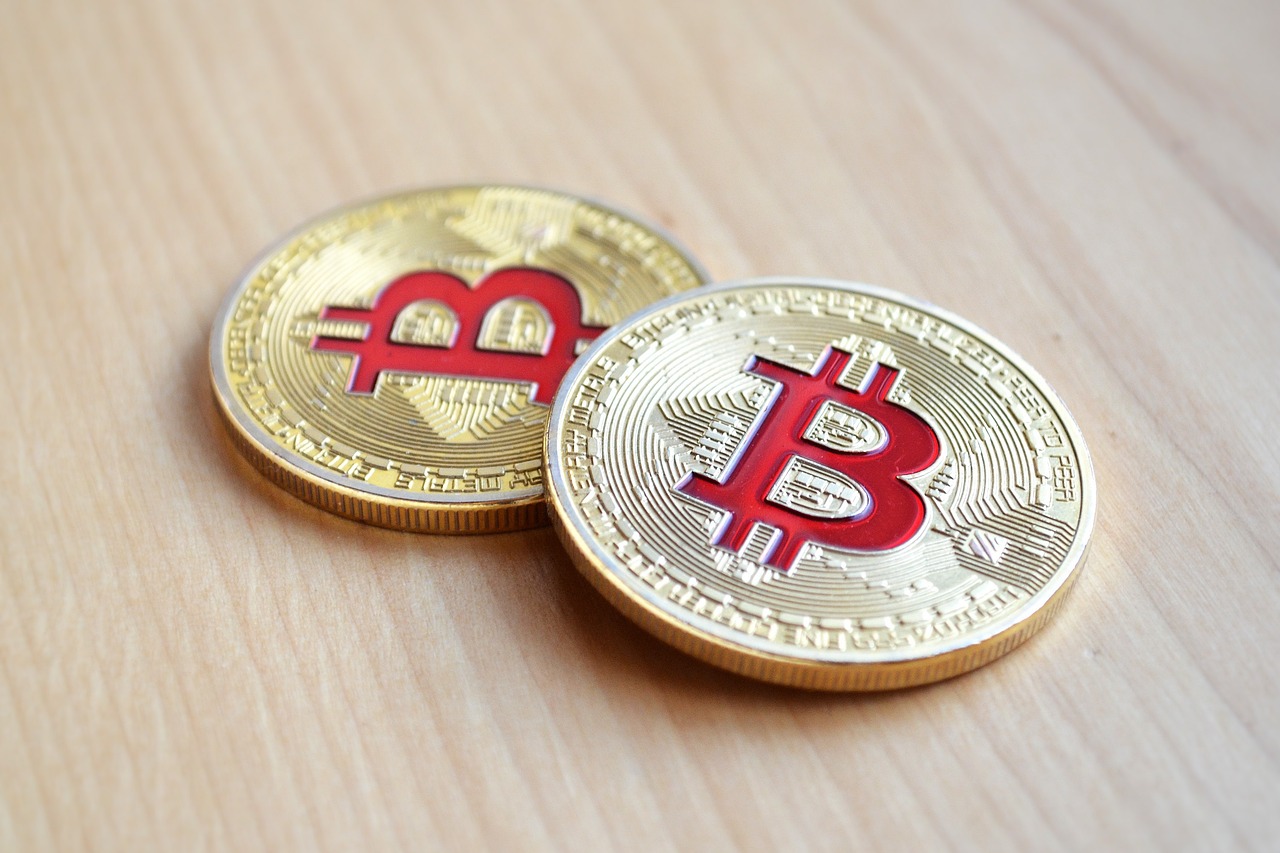
Potential Challenges
The world of crypto derivatives trading is undoubtedly exciting, but it’s not without its share of challenges. As the market continues to evolve, several key obstacles could hinder its growth and stability. One of the primary challenges is the regulatory landscape. Governments around the globe are still trying to understand how to regulate cryptocurrencies and their derivatives effectively. The lack of clear regulations can create uncertainty, which often leads to hesitance among potential investors. Imagine trying to navigate a maze without a map; that’s how many traders feel when the rules keep changing.
Another significant challenge is market volatility. Cryptocurrencies are known for their wild price swings, and when you add derivatives into the mix, the potential for risk increases exponentially. Traders must be prepared for sudden market movements that can wipe out gains or amplify losses in a matter of seconds. This unpredictability can deter less experienced traders from entering the market, as they might feel overwhelmed by the risks involved.
Furthermore, the liquidity of crypto derivatives can be a double-edged sword. While increased liquidity, often driven by institutional investors, can enhance market efficiency, it can also lead to the risk of manipulation. In a market where large players can have a significant impact, the potential for price manipulation looms large, raising concerns about fairness and transparency. Traders need to be vigilant and aware of these dynamics to protect their investments.
Lastly, the technological infrastructure supporting crypto derivatives trading is still maturing. Issues such as platform reliability and security vulnerabilities can pose risks for traders. Hacks and technical failures can lead to significant financial losses, and as the market grows, the stakes become even higher. Traders must stay informed about the platforms they choose to use and ensure that they are employing best practices for security.
To summarize, the potential challenges facing crypto derivatives trading include:
- Regulatory uncertainty
- Market volatility
- Liquidity risks
- Technological vulnerabilities
Addressing these challenges will be crucial for the future of crypto derivatives trading. As the market matures, stakeholders must work together to create a safer, more stable environment that encourages participation while mitigating risks.
Q: What are crypto derivatives?
A: Crypto derivatives are financial contracts whose value is derived from the price movements of underlying cryptocurrencies. They allow traders to speculate on price changes without owning the actual asset.
Q: Why are regulations important in crypto derivatives trading?
A: Regulations help protect investors, ensure market integrity, and reduce the risk of fraud and manipulation. A clear regulatory framework can also foster trust and encourage more participants to enter the market.
Q: How can traders manage risks in a volatile market?
A: Traders can employ various risk management strategies, such as setting stop-loss orders, diversifying their portfolios, and using hedging techniques to mitigate potential losses.
Q: What impact does institutional investment have on the crypto derivatives market?
A: Institutional investment can enhance market liquidity and stability, but it can also introduce new risks, such as potential market manipulation. Understanding these dynamics is essential for all market participants.
Frequently Asked Questions
- What are crypto derivatives?
Crypto derivatives are financial contracts that derive their value from underlying cryptocurrencies. They allow traders to speculate on the price movements of these assets without actually owning them. This can enhance trading strategies and provide opportunities for profit in both rising and falling markets.
- How do crypto derivatives differ from traditional derivatives?
While traditional derivatives are based on assets like stocks or commodities, crypto derivatives focus specifically on cryptocurrencies. The volatility and unique market dynamics of cryptocurrencies can lead to different risk profiles, trading strategies, and regulatory considerations compared to traditional derivatives.
- Why are institutional investors getting involved in crypto derivatives?
Institutional investors are increasingly entering the crypto derivatives market due to the potential for high returns, diversification benefits, and the growing acceptance of cryptocurrencies as a legitimate asset class. Their participation can also bring more stability and legitimacy to the market.
- What impact does institutional adoption have on market liquidity?
The influx of institutional capital significantly enhances market liquidity, meaning that traders can enter and exit positions more easily without causing drastic price changes. Increased liquidity typically leads to tighter spreads and better pricing for all market participants.
- What are some effective risk management strategies for trading crypto derivatives?
Traders can employ various risk management strategies, such as using stop-loss orders to limit potential losses, diversifying their portfolios to spread risk, and utilizing options to hedge against adverse price movements. Understanding market conditions and setting clear trading goals are also crucial components of an effective strategy.
- How is the regulatory landscape affecting crypto derivatives trading?
The regulatory environment for crypto derivatives is complex and continually evolving. Recent developments can impact how derivatives are traded, the types of products available, and the obligations of market participants. Staying informed about regulatory changes is essential for anyone involved in this space.
- What technological innovations are shaping the future of crypto derivatives trading?
Emerging technologies like blockchain and artificial intelligence are set to revolutionize crypto derivatives trading. Blockchain can enhance transparency and security, while AI can improve trading strategies and risk assessment, making the market more efficient and accessible.
- What challenges does the crypto derivatives market face?
Despite its growth potential, the crypto derivatives market faces several challenges, including regulatory hurdles, market volatility, and the need for improved infrastructure. These obstacles can impact the industry's future and require ongoing adaptation from market participants.





